Have you ever wondered why some of your beauty products change color, texture, or even develop a peculiar smell before you finish them? The answer often lies in how you store makeup. Your storage practices play a huge role in maintaining the quality, longevity, and safety of every product you own, from the most trusted foundation to your favorite mascara. Proper storage is essential not just for preserving formula stability and hygiene but also for ensuring seamless application every time you reach for your cosmetics.

In this comprehensive guide on how to store makeup, we’ll break down everything you need to know: how long products last, how the environment affects your beauty stash, the best organization techniques, care for each product type, and how to keep your entire collection ready for home, travel, and beyond. Whether you’re a makeup minimalist or have a collection worthy of a pro, these strategies will help you protect both your investment and your skin.
The Essentials: Shelf Life, PAO, and Expiration
Once you start building your makeup collection, it’s important to understand the concept of shelf life and expiration. Most products are marked with a “Period After Opening” (PAO) symbol, batch code, or plain expiration date. Knowing how to read these markings is the first step in prolonging product safety and performance.
Reading PAO Symbols and Batch Codes
Look for a small jar icon on each package—this is the PAO symbol. The number inside (like 6M or 12M) shows how many months the product is safe to use after it’s opened. Some brands also print batch codes, which you can use online to trace the exact production or expiration date. Familiarizing yourself with these details allows you to manage your makeup more effectively and avoid using compromised formulas.
When to Toss: Texture, Smell, Separation
Even without looking at the packaging, your senses can guide you. If your foundation starts to separate persistently, a lipstick turns dry or grainy, or a mascara develops a sour or chemical smell, it’s time to toss it. Likewise, any change in color or texture that wasn’t there before—especially in creams and liquids—means bacteria may have started to grow. Trust your instincts and err on the side of caution.
Labeling and Rotation Systems
A clever way to monitor your products’ age is to add a small label or piece of tape with the opening date written on it. Store items you opened first toward the front and newer ones behind. Rotating items this way makes it easier to use up products before they expire and helps avoid any accidental overuse of older makeup.
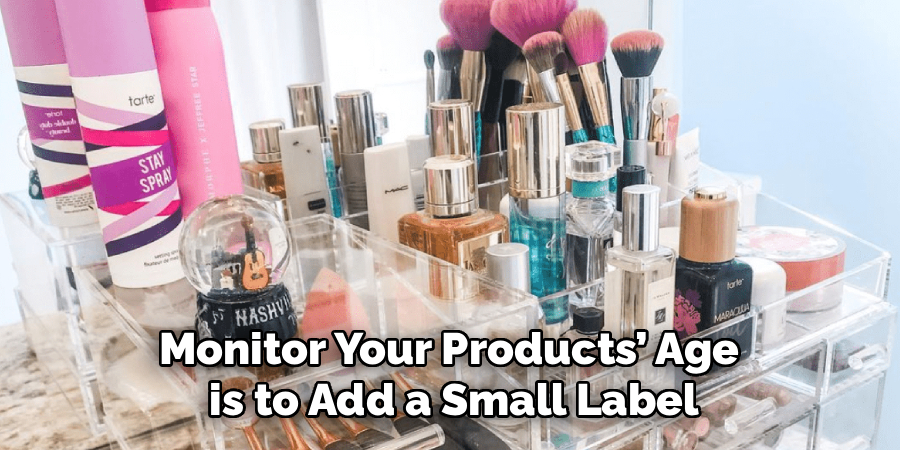
Environment Control: Temp, Light, Humidity
Where you store makeup can have just as much impact as how you store it. Temperature fluctuations, sunlight, and dampness are all common causes of premature product spoilage.
Ideal Temperature Ranges
Makeup lives longest in a cool, stable environment—think dry, moderate rooms rather than hot, steamy bathrooms or sun-soaked shelves. Ideally, products should be kept at room temperature, between 15–25°C (59–77°F). Excess heat can cause creams and liquids to separate or melt, while cold can alter consistency and make powders brittle.
Light Protection and UV Risks
Exposure to direct sunlight or strong artificial lighting can degrade your cosmetics. UV light can break down pigments and cause active skincare ingredients (like vitamin C) to lose potency. Storing products inside drawers, closed containers, or shaded vanity organizers will protect your makeup and keep it looking and performing as intended.
Humidity Management (Bathroom Pitfalls)
Bathrooms might seem like the most practical place for your makeup kit, but humidity from showers and baths promotes bacteria and can even cause powder products to become hard or form a layer on top. If possible, store your beauty collection outside the bathroom, or at least in airtight organizers away from constant moisture.
Step-by-Step Guide: How to Store Makeup
A systematic approach helps ensure not only that your makeup lasts but also that it’s easy to access, use, and maintain. Here’s how to set up a functional, hygienic storage system from scratch.
Step 1: Audit and Declutter Your Collection
Begin by emptying all your makeup storage spaces—for drawers, bags, boxes, and kits. Review every item, checking expiration dates, textures, and scents. Set aside anything expired, separated, or that you no longer use. A regular declutter (at least twice a year) not only frees up space but also prevents accidental application of compromised products.
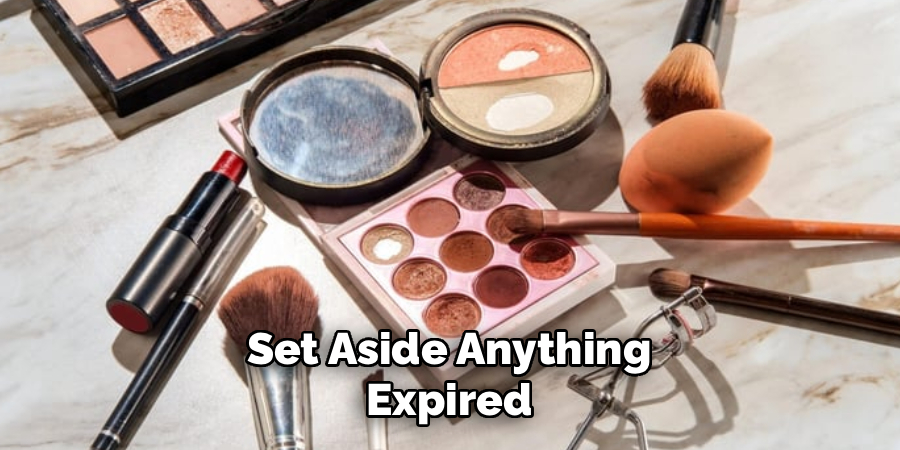
Step 2: Sanitize Products and Tools
Before reorganizing, clean all containers, brushes, and sponges. Wipe product exteriors with a lightly damp cloth, and disinfect with rubbing alcohol (avoid spraying alcohol on powders or creams directly). Wash brushes and sponges thoroughly, ensuring they’re completely dry before storing them back in place. Hygiene here extends product life and safeguards your skin.
Step 3: Categorize by Product Type and Frequency
Sort your remaining items by type—foundations, powders, eyeliners, lipsticks, etc. You can further divide them by frequency of use: everyday essentials versus bold “special occasion” items. Place daily items in easy-to-access spots, with less frequently used ones toward the back or sides. This reduces clutter and speeds up your routine.
Step 4: Choose Containers (Drawers, Trays, Inserts)
Different products call for different storage solutions. Deep drawers with inserts or adjustable trays help store larger items, while shallow trays keep small tubes and pans in view. Acrylic organizers are popular for their visibility, but opaque containers offer added protection from light. Choose what best fits your available space and collection size.
Step 5: Label, Date, and Create a Rotation Plan
Add clear labels or small stickers for each section—foundation, lip, eye, etc.—and consider marking the open date on items with a small sticker. Set reminders in your calendar to rotate items and do mini-purges every few months. This habit keeps your storage system low-maintenance and your products safer for longer.
Storage Solutions: Drawers, Trays, and Kits
A great storage system is both functional and tailored to your needs. Once you understand the options, you’ll find a combination that makes sense for your space, collection size, and routine.
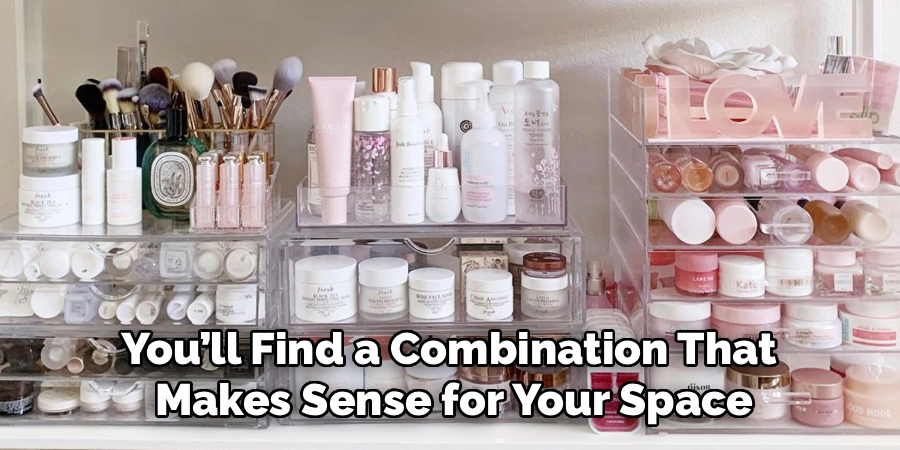
Drawer Inserts and Stackable Systems
Customizable drawer inserts are ideal for dividing up large collections. Some are adjustable, while others come in fixed sizes or modular sets. Stackable containers work well for maximizing vertical space, letting you store seasonal shades without taking up your main vanity area.
Open Trays vs. Closed Bins
Open trays offer quick access, especially for items you use daily. However, they leave products exposed to light and dust. Closed bins—either opaque or clear—protect products from environmental factors and create a tidier appearance, albeit with slightly less accessibility. Pick the balance that fits your habits.
Portable Kits for Pros and Travelers
If you travel often or work as a professional, invest in makeup train cases, hard-shell pouches, or zippered organizers with compartments. These systems keep makeup safe from leaks, breakage, and temperature swings—and help you set up quickly in any environment.
Hygiene Habits That Extend Product Life
Hygiene is the foundation of both skin health and product longevity. Some simple, consistent habits will keep your makeup collection fresh and safe.
Wash Cycles for Brushes/Sponges
Clean makeup brushes and sponges at least once a week if you use them regularly, and more often if you have sensitive or acne-prone skin. Use a gentle brush, soap, or baby shampoo, rinse thoroughly, and dry flat or upside down to prevent water from seeping into the ferrule (the brush base).
Spatulas, Sharpeners, and Alcohol Spritz
For cream products in pots or jars, always use a clean spatula to avoid contaminating the bulk product. Sharpen pencils (eyeliner, lip) before each use for both hygiene and precision. Spritzing powder or blush surfaces lightly with isopropyl alcohol can sanitize them—just allow to dry completely before use.
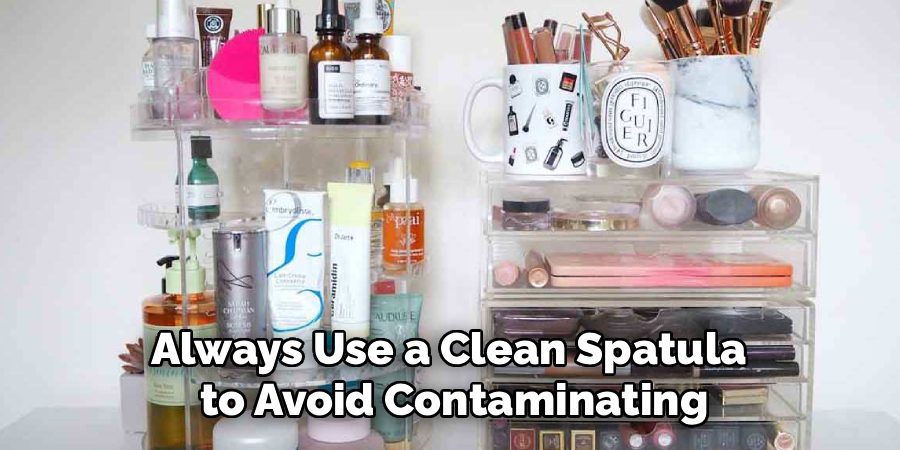
Hand Hygiene and Cross-Contamination
Wash your hands before applying makeup, especially if you use fingers for creams or touch multiple items. Avoid using the same applicator for different products unless it’s been cleaned between uses. This prevents the transfer of bacteria and oils, protecting both product and skin.
Product-Specific Care
Different formulas require different care. Treating each category properly prevents rapid spoilage and ensures the best performance.
Liquids/Creams (Foundations, Mascaras)
Liquid and cream products are highly prone to bacterial growth once exposed to air and skin. Always tighten caps immediately after use, and avoid “pumping” mascara wands, which push extra air inside. Never add water to thin out dried product—it introduces bacteria. Store upright and away from heat to maintain consistency.
Powders (Pressed/Loose)
Powder formulas are less prone to bacteria, but still need care. Keep lids tightly closed and avoid exposure to high humidity. If a powder develops a tough outer layer, gently scrape it off with a clean tool—hardened surfaces can be a sign of humidity or oil transfer.
Pencils and Gels
Pencils (eye, lip, brow) last longer if you sharpen regularly, which removes the exposed layer and potential contaminants. Gel liners should be closed tightly and stored tip-down when possible to prevent drying out.
Travel Storage and Climate Considerations
Your makeup routine doesn’t stop when you’re on the go. Smart packing ensures your products survive the journey and the climate.
Leak-Proofing and Pressure Changes
To prevent spills, especially for liquids and creams, use tape or plastic wrap under lids before tightening. Place all products in zippered plastic pouches or makeup bags with waterproof liners. These steps keep messes contained, especially when flying, where pressure can loosen caps. For added security, consider placing these items in a waterproof toiletry bag or separate pouch.
Temperature-Sensitive Products
Extreme heat can melt products like lipsticks and cream blushes. Store them in a cool place or use insulated bags with ice packs when on the move. Some beauty brands also offer travel-sized versions of their heat-sensitive products that are designed to withstand higher temperatures.
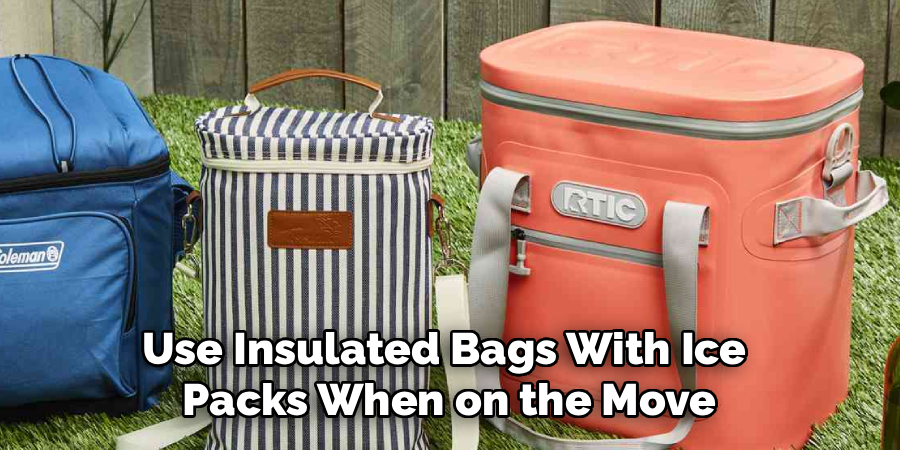
Conclusion
Properly storing your makeup while traveling ensures that your beauty products remain safe, easy to access, and in their best condition. By following these tips on how to store makeup, such as using waterproof pouches, protecting temperature-sensitive items, and organizing your essentials strategically, you can avoid spills, damage, and unnecessary hassle. With a little preparation, your makeup will be ready to use whenever you need it, no matter where your adventures take you.
About the Author
Jane Hubbard is a passionate beauty expert with a wealth of experience in makeup, hair, and overall beauty techniques. After years of working as a hairdresser specialist, she followed her entrepreneurial spirit and started her own consultancy business.
Jane has always been driven by her desire to help others feel confident in their own skin, and she does this by sharing her knowledge, experiences, and practical beauty tips. Through her consultancy, she empowers individuals to embrace their unique beauty, offering tailored guidance that boosts both self-esteem and personal style.
Professional Focus
- Specializes in makeup, hairstyling, and beauty consulting.
- Provides personalized beauty advice, tips, and techniques to help individuals feel confident in their appearance.
- Dedicated to staying up-to-date with the latest industry trends and developments.
- Passionate about creating a comfortable and empowering experience for every client.
Education History
- University of Craft and Design – Bachelor of Fine Arts (BFA) in Woodworking and Furniture Design
- Woodworking Apprenticeships – Extensive hands-on training with skilled craftsmen to refine carpentry and furniture making techniques
- Online Courses & Masterclasses – Continued education in advanced woodworking techniques, design principles, and specialized tools
Expertise:
- Makeup artistry, hairstyling, and beauty consulting.
- Personalized beauty techniques to enhance confidence and self-expression.
- Educating clients on how to maintain their beauty routines at home.
